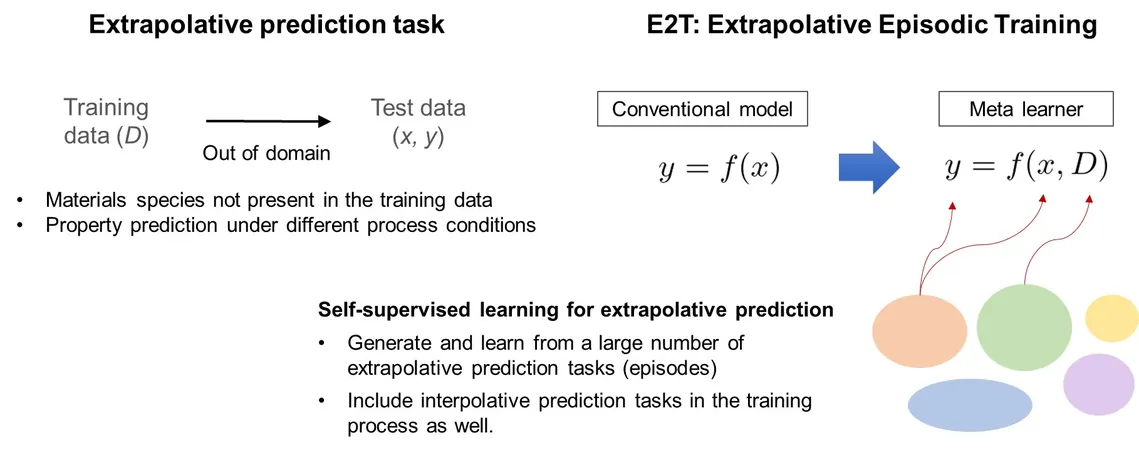
Hubble Unveils Uranus' Rotation Like Never Before: What This Means for Future Space Exploration!
2025-04-07
Author: John Tan
Hubble Unveils Uranus' Rotation Like Never Before: What This Means for Future Space Exploration!
In a groundbreaking achievement, an international team of astronomers using the NASA/ESA Hubble Space Telescope has successfully determined the interior rotation rate of Uranus with unprecedented precision. This innovative study enhances our understanding of one of the solar system's most enigmatic planets and sets a vital reference for future planetary research.
For years, scientists have grappled with the challenge of accurately measuring Uranus' rotation, particularly since direct observations are virtually impossible. Helmed by astronomer Laurent Lamy from the Observatoire de Paris-PSL and Aix-Marseille University in France, the team devised a novel technique to monitor the planet's auroras. These magnificent light displays—resulting from energetic particles colliding with Uranus' magnetic field near its poles—served as a unique marker for tracking rotational motion.
Their meticulous analysis of over ten years of Hubble's observations unveiled that Uranus completes one full rotation in 17 hours, 14 minutes, and 52 seconds—28 seconds longer than the figure obtained by NASA's Voyager 2 during its flyby in 1986. This significant advancement was published in the esteemed journal Nature Astronomy.
Lamy emphasized the importance of this precise measurement, stating, "Our results not only provide a critical reference for the planetary science community but also address a long-standing problem. Previous coordinate systems were based on outdated rotation periods, which led to inaccuracies in tracking Uranus' magnetic poles over time. Now, with this new longitude system, we can compare auroral observations collected over nearly four decades and even prepare for upcoming missions to Uranus."
Hubble's long-term monitoring was crucial to this groundbreaking finding. The telescope has consistently observed Uranus' ultraviolet auroral emissions for years, allowing researchers to analyze the planet's magnetic poles through sophisticated magnetic field models.
Lamy noted, "The continuous data from Hubble were essential. Without such extensive observations, achieving the accuracy we did would have been impossible."
Uranus presents a fascinating contrast to the auroras found on Earth, Jupiter, or Saturn. The unique and often unpredictable behavior of Uranus' auroras is attributed to the planet's highly tilted magnetic field—significantly offset from its rotational axis. This research not only aids astronomers in deciphering Uranus' complex magnetosphere but also offers critical insights for planned future exploration missions.
In fact, the Planetary Science Decadal Survey in the U.S. has prioritized the Uranus Orbiter and Probe concept, indicating a bright future for exploration of this distant ice giant. With these new discoveries and technological innovations, a new era of understanding Uranus and its many mysteries is on the horizon!
Stay tuned for more updates as space agencies gear up for their quest to unlock the secrets of Uranus!





 Brasil (PT)
Brasil (PT)
 Canada (EN)
Canada (EN)
 Chile (ES)
Chile (ES)
 Česko (CS)
Česko (CS)
 대한민국 (KO)
대한민국 (KO)
 España (ES)
España (ES)
 France (FR)
France (FR)
 Hong Kong (EN)
Hong Kong (EN)
 Italia (IT)
Italia (IT)
 日本 (JA)
日本 (JA)
 Magyarország (HU)
Magyarország (HU)
 Norge (NO)
Norge (NO)
 Polska (PL)
Polska (PL)
 Schweiz (DE)
Schweiz (DE)
 Singapore (EN)
Singapore (EN)
 Sverige (SV)
Sverige (SV)
 Suomi (FI)
Suomi (FI)
 Türkiye (TR)
Türkiye (TR)
 الإمارات العربية المتحدة (AR)
الإمارات العربية المتحدة (AR)